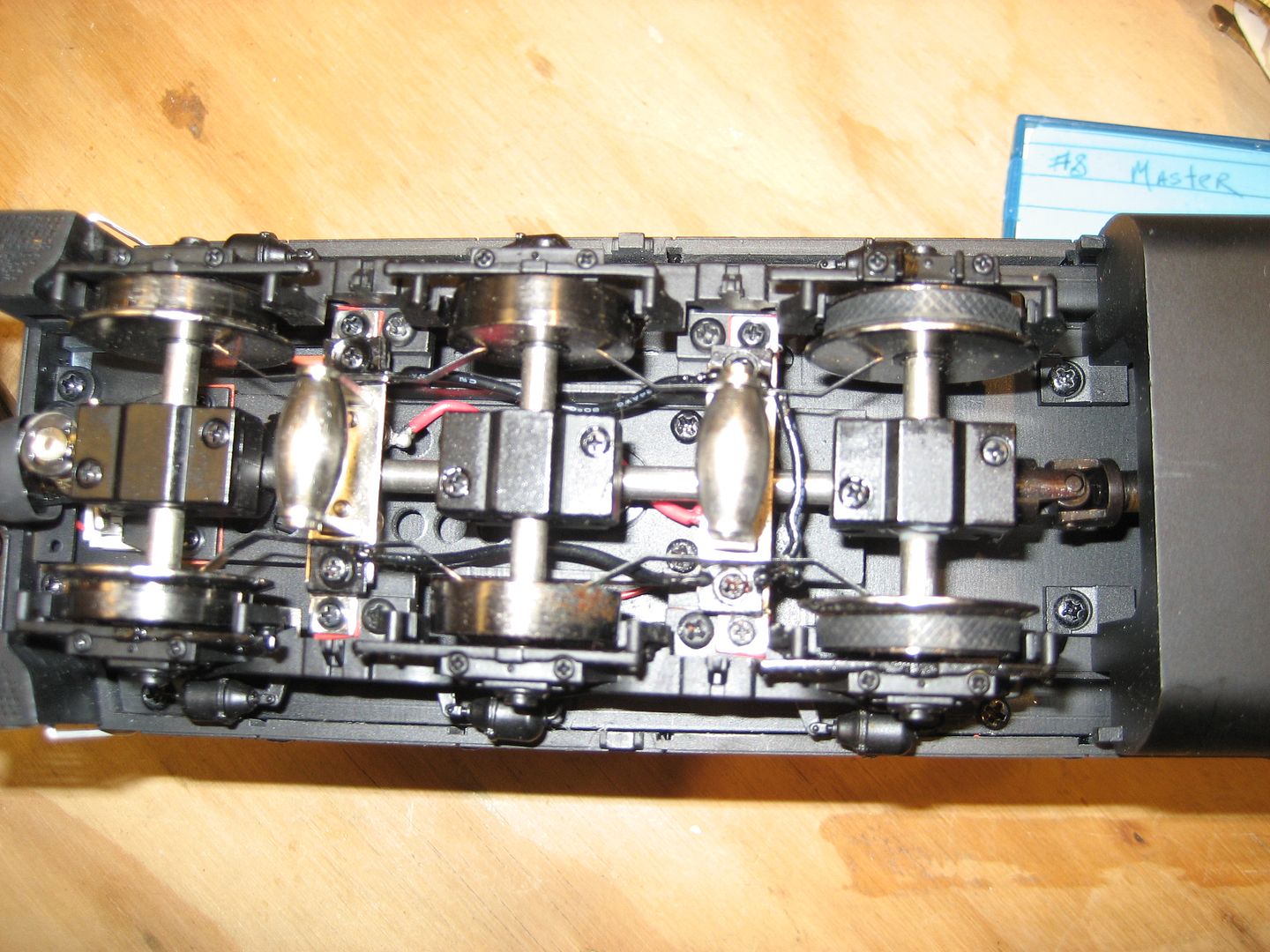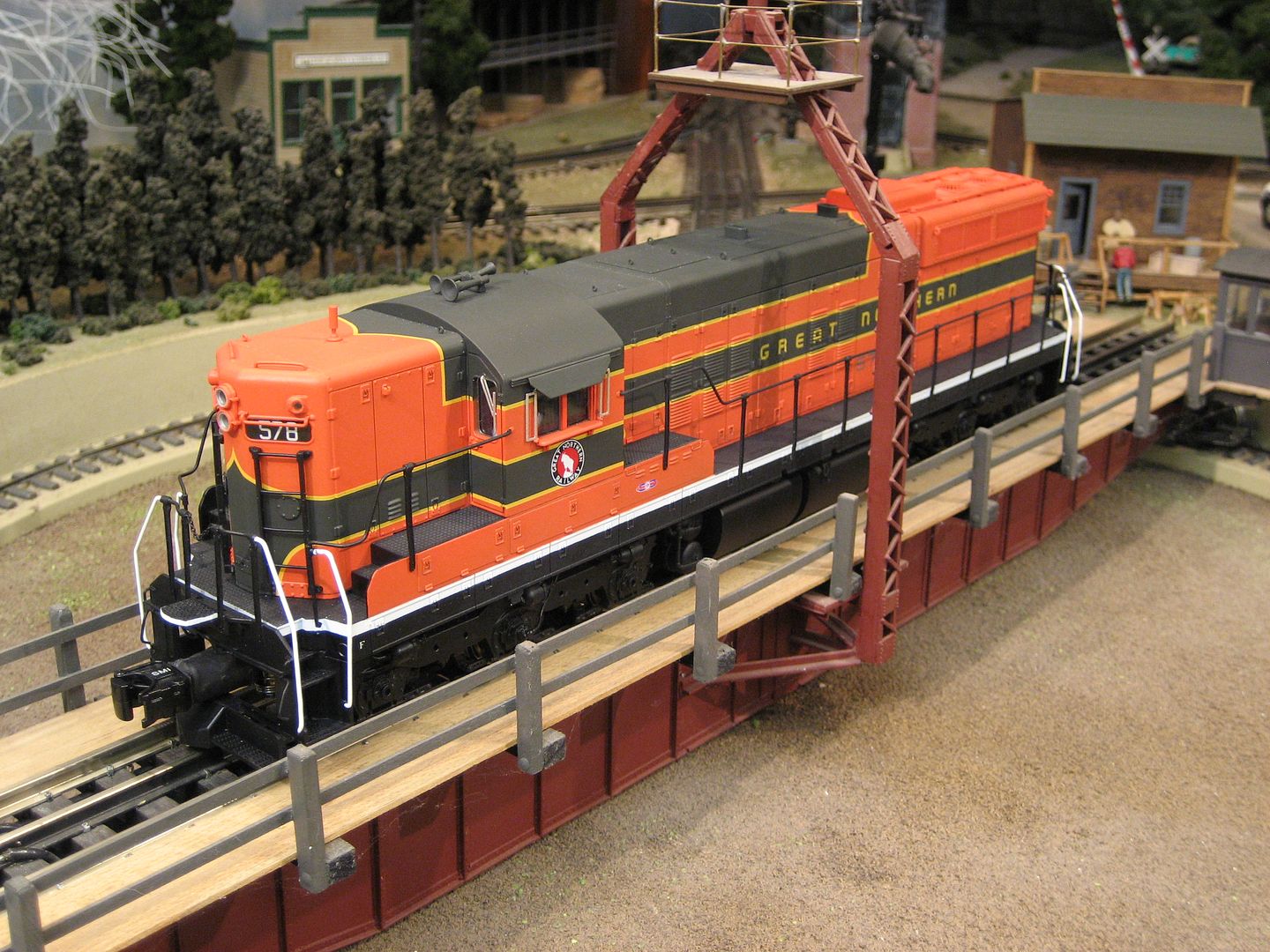I bought a used ES44AC UP MTH Diesel 20-20284-1. The attached box reads "Operates On 0-36 Curves. But the MTH Web site:
https://mthtrains.com/20-20284-1 states:
|




|
I bought a used ES44AC UP MTH Diesel 20-20284-1. The attached box reads "Operates On 0-36 Curves. But the MTH Web site:
https://mthtrains.com/20-20284-1 states:
Replies sorted oldest to newest
While I don't have a direct answer for you, I was faced with the same conundrum. I bought a beautiful ALCO PA D&H AA set from a forum member. While researching its specific details, the Lionel website clearly said O31 minimum.
When the set arrived, page two of the manual says O42 minimum! Needless to say, my layout has been down for a few months while I add an O54 outer loop. I always assumed it was a printing mistake, but your experience has me wondering if it's common.
Tom
So whats the issue here? If you bought it thinking it would run on O42, then the fact that it'll run on O36 is irrelevant.
MTH doesnt make 036 as far as I know, just 31 and 42. So if it wont run on O31, 42 became the default. With fastrack offering O36, is likely they just updated the sticker, while the website is just a boilerplate copy/paste from an earlier run.
@Profuse posted:I bought a used ES44AC UP MTH Diesel 20-20284-1. The attached box reads "Operates On 0-36 Curves. But the MTH Web site:
https://mthtrains.com/20-20284-1 states:
O-42 on the MTH website is a typo. It's 42" radius for a scale wheel, fixed pilot model.
The difference in curve minimums is due to the fact that fixed pilot models with body-mounted couplers and smaller wheel flanges require a significantly wider curve.
I bought it off of EBay where the picture of the box stated 0-36. Either it was designed for what the box states or it wasn’t. The question is, was the web site coded in error, or has MTH quality control gone amuck?
@catnap posted:O-42 on the MTH website is a typo. It's 42" radius for a scale wheel, fixed pilot model.
The difference in curve minimums is due to the fact that fixed pilot models with body-mounted couplers and smaller wheel flanges require a significantly wider curve.
42" radius, or 42" diameter? 42" radius would be O-84.
Not being snarky - I don't have any MTH engines with scale wheels. 42" diameter seems very tight for O scale.
The 2013V1 catalog has 42” radius for that model. Also has O42 for most of the 6 axle premier diesels. I looked at the boxes and the website for a few of my premier 6 axle diesels and found the same discrepancy (O42 on the website and O36 on the box).
I suspect Boilermaker1 has the correct explanation.
@Mallard4468 posted:42" radius, or 42" diameter? 42" radius would be O-84.
Not being snarky - I don't have any MTH engines with scale wheels. 42" diameter seems very tight for O scale.
2-rail measures curves in radii, so a 42" radius is the curve minimum for a 2-rail model. O-36 is the minimum for a 3-rail loco with swinging, articulated pilots/couplers.
Curve Diameter is (2X) the curve radius. Unfortunately, Three rail uses Curve Diameter measurements. O54, most of my layout, implies 54" diameter curves/27" radius. Works well on a 5ft (60") wide train table. For some reason most 2 rail track curves are radius measurements. I could be wrong and often ![]() Mike CT.
Mike CT.
Mike, you are correct.
The terms O27, O31, O36, O42, O48, O54, O63, O72, etc., refer to curved track diameters. So, an O36 circle is (nominally) 36 inches in diameter.
Radius, half of a diameter, is not used as a descriptor in 3-rail, only in 2-rail scale gauges.
As for the discrepancy on the box concerning O42 and O36 minimum diameters, MTH will be able to clarify. I suspect, as has been suggested, that MTH was simply inconsistent in its description.
But for its scale-wheel versions for 3-rail, MTH does not use the radius term. MTH only uses radius for its two-rail versions.
Some of the Three rail models may have small than traditional wheel flanges. Sunset Thirdrail SD7/9 model.

Another interesting note: Some of the up-scale three rail models may have small, more realistic looking wheel flanges, v.s. the large standard 3-rail flange that are familiar to most. Picture, Sunset Third rail SD 7/9 model


One of the General Rules of all railroad rule books is "In case of doubt, the safe course must be taken."
So, if it is known in advance that the box label and the catalog disagree, I'd not spend my money unless all of my curved track meets or exceeds the less restrictive of the two radii.
However, if I found out about the conflicting information after receiving the box, I'd test the locomotive and some cars of various lengths to couple behind it and see if everything stays on the track, and there is not excessive overhang on the inside and outside of my sharpest curve. Sometimes the issue is not that the locomotive cannot negotiate the curve, but that coupler displacement may pull a car with a short coupler off the track, or that the engine might strike a switch stand or other object adjacent to the curve.
I like Jim's explanation.
Since this is a Hi-rail version and not a Scale-Wheel version (2-rail), let's leave the term radius out of this.
I would think a Premier version of this loco could run on O-36, but would probably be tight. I've run engines on curves tighter than recommended and they do run, but will jump the track and jump back on. Not the greatest way to run them. And, you have a pretty good chance of having an issue with switches at the tighter diameter.
So, after all that blabber i just said above ![]() , I'd recommend at least O-42 for this engine.
, I'd recommend at least O-42 for this engine.
I have seen the same discrepancy before between MTH's website and the label on the box.
Access to this requires an OGR Forum Supporting Membership
